Critical Analysis of McDonald Company's Balance Sheet & Ratios
VerifiedAdded on 2023/06/15
|5
|629
|231
Report
AI Summary
This report critically examines the balance sheet of McDonald Company, identifying misclassifications of items such as prepaid insurance, notes payable, bonds payable, and dividends payable. The analysis then calculates and interprets key liquidity ratios, including the working capital ratio, current ratio, and quick ratio, to assess the company's short-term debt-paying ability. The corrected classifications and ratio analysis reveal a healthy liquidity position for McDonald Company, demonstrating the importance of accurate financial statement presentation. Desklib offers a wealth of similar solved assignments and resources for students.
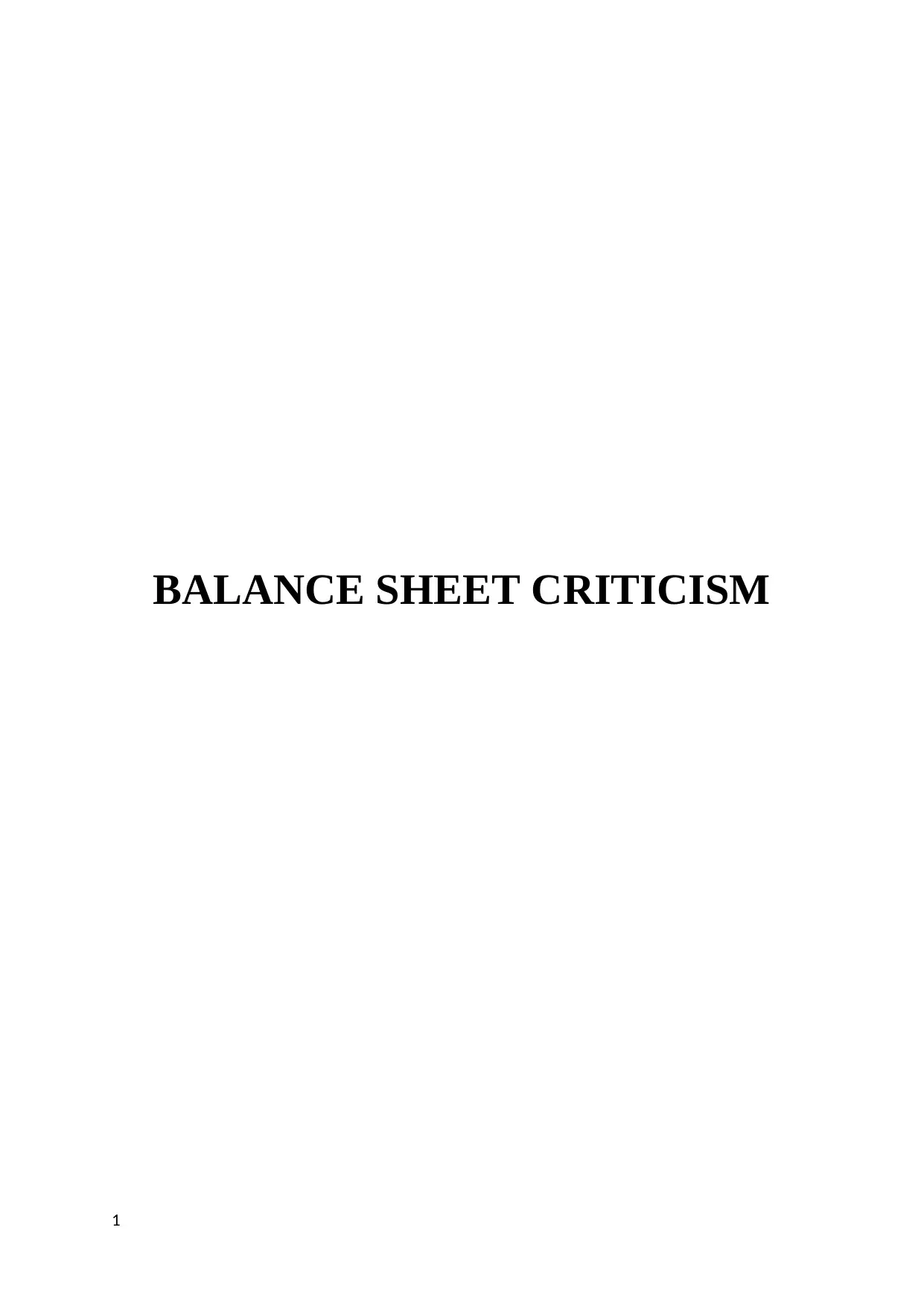
BALANCE SHEET CRITICISM
1
1
Paraphrase This Document
Need a fresh take? Get an instant paraphrase of this document with our AI Paraphraser
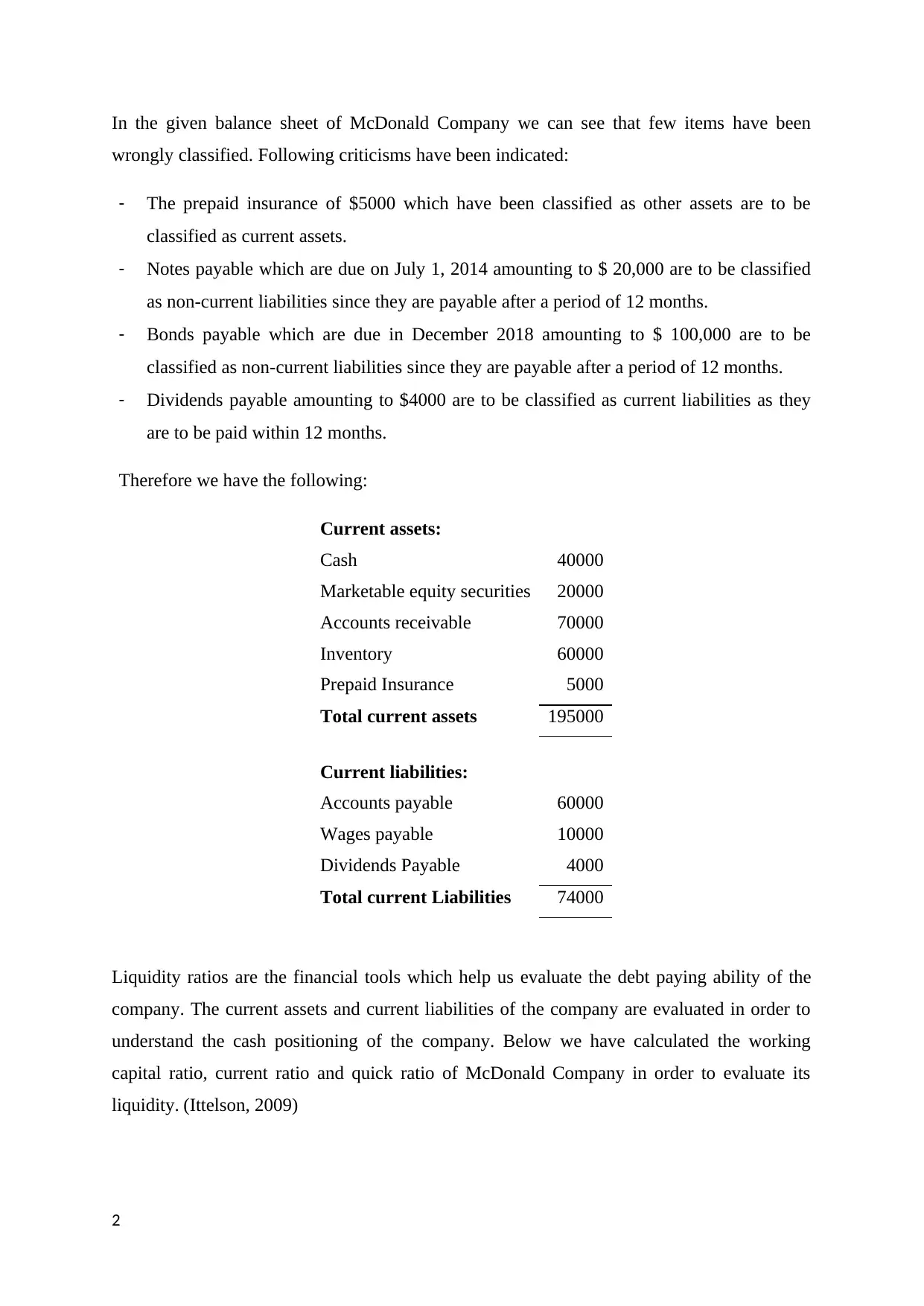
In the given balance sheet of McDonald Company we can see that few items have been
wrongly classified. Following criticisms have been indicated:
- The prepaid insurance of $5000 which have been classified as other assets are to be
classified as current assets.
- Notes payable which are due on July 1, 2014 amounting to $ 20,000 are to be classified
as non-current liabilities since they are payable after a period of 12 months.
- Bonds payable which are due in December 2018 amounting to $ 100,000 are to be
classified as non-current liabilities since they are payable after a period of 12 months.
- Dividends payable amounting to $4000 are to be classified as current liabilities as they
are to be paid within 12 months.
Therefore we have the following:
Current assets:
Cash 40000
Marketable equity securities 20000
Accounts receivable 70000
Inventory 60000
Prepaid Insurance 5000
Total current assets 195000
Current liabilities:
Accounts payable 60000
Wages payable 10000
Dividends Payable 4000
Total current Liabilities 74000
Liquidity ratios are the financial tools which help us evaluate the debt paying ability of the
company. The current assets and current liabilities of the company are evaluated in order to
understand the cash positioning of the company. Below we have calculated the working
capital ratio, current ratio and quick ratio of McDonald Company in order to evaluate its
liquidity. (Ittelson, 2009)
2
wrongly classified. Following criticisms have been indicated:
- The prepaid insurance of $5000 which have been classified as other assets are to be
classified as current assets.
- Notes payable which are due on July 1, 2014 amounting to $ 20,000 are to be classified
as non-current liabilities since they are payable after a period of 12 months.
- Bonds payable which are due in December 2018 amounting to $ 100,000 are to be
classified as non-current liabilities since they are payable after a period of 12 months.
- Dividends payable amounting to $4000 are to be classified as current liabilities as they
are to be paid within 12 months.
Therefore we have the following:
Current assets:
Cash 40000
Marketable equity securities 20000
Accounts receivable 70000
Inventory 60000
Prepaid Insurance 5000
Total current assets 195000
Current liabilities:
Accounts payable 60000
Wages payable 10000
Dividends Payable 4000
Total current Liabilities 74000
Liquidity ratios are the financial tools which help us evaluate the debt paying ability of the
company. The current assets and current liabilities of the company are evaluated in order to
understand the cash positioning of the company. Below we have calculated the working
capital ratio, current ratio and quick ratio of McDonald Company in order to evaluate its
liquidity. (Ittelson, 2009)
2
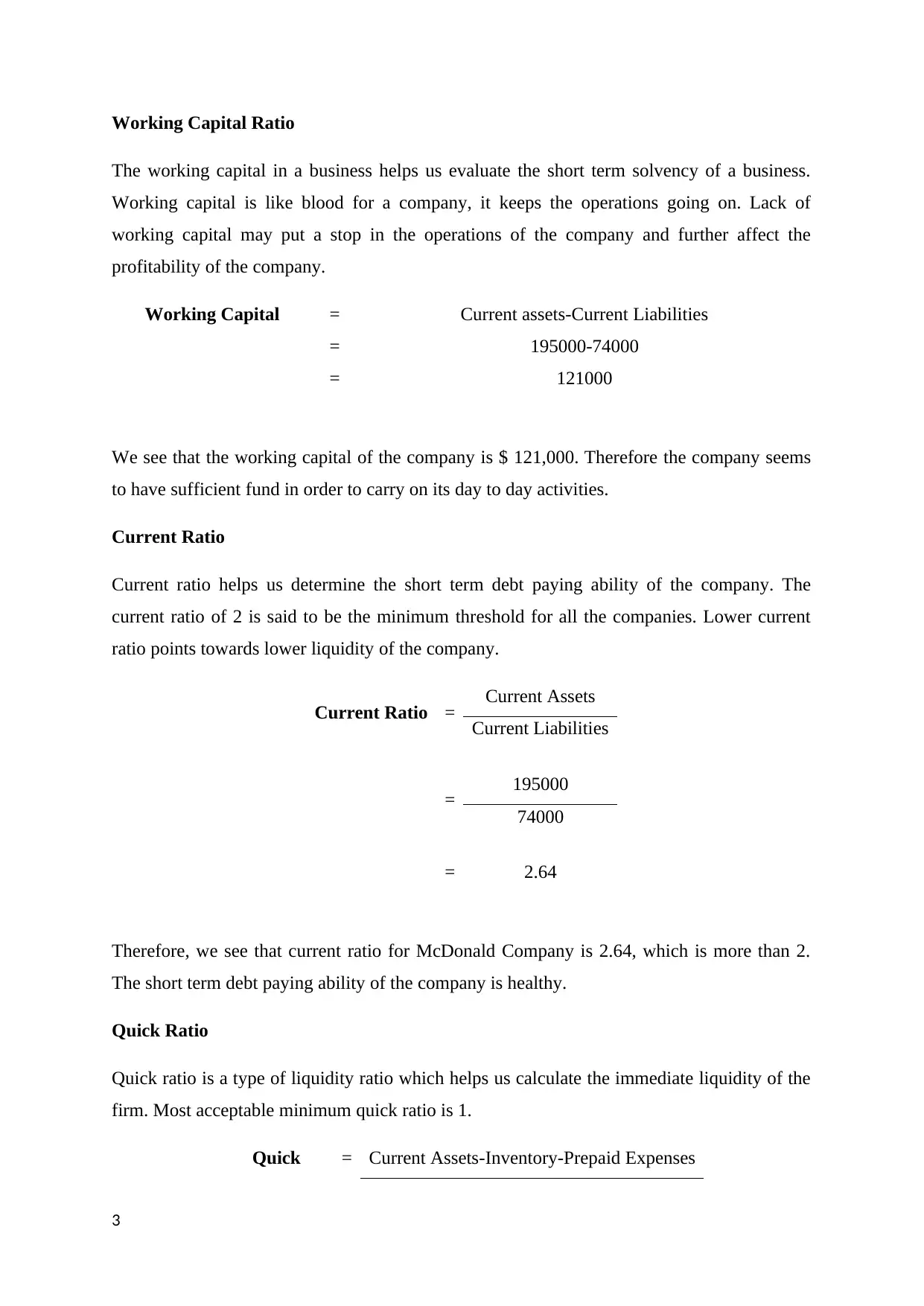
Working Capital Ratio
The working capital in a business helps us evaluate the short term solvency of a business.
Working capital is like blood for a company, it keeps the operations going on. Lack of
working capital may put a stop in the operations of the company and further affect the
profitability of the company.
Working Capital = Current assets-Current Liabilities
= 195000-74000
= 121000
We see that the working capital of the company is $ 121,000. Therefore the company seems
to have sufficient fund in order to carry on its day to day activities.
Current Ratio
Current ratio helps us determine the short term debt paying ability of the company. The
current ratio of 2 is said to be the minimum threshold for all the companies. Lower current
ratio points towards lower liquidity of the company.
Current Ratio = Current Assets
Current Liabilities
= 195000
74000
= 2.64
Therefore, we see that current ratio for McDonald Company is 2.64, which is more than 2.
The short term debt paying ability of the company is healthy.
Quick Ratio
Quick ratio is a type of liquidity ratio which helps us calculate the immediate liquidity of the
firm. Most acceptable minimum quick ratio is 1.
Quick = Current Assets-Inventory-Prepaid Expenses
3
The working capital in a business helps us evaluate the short term solvency of a business.
Working capital is like blood for a company, it keeps the operations going on. Lack of
working capital may put a stop in the operations of the company and further affect the
profitability of the company.
Working Capital = Current assets-Current Liabilities
= 195000-74000
= 121000
We see that the working capital of the company is $ 121,000. Therefore the company seems
to have sufficient fund in order to carry on its day to day activities.
Current Ratio
Current ratio helps us determine the short term debt paying ability of the company. The
current ratio of 2 is said to be the minimum threshold for all the companies. Lower current
ratio points towards lower liquidity of the company.
Current Ratio = Current Assets
Current Liabilities
= 195000
74000
= 2.64
Therefore, we see that current ratio for McDonald Company is 2.64, which is more than 2.
The short term debt paying ability of the company is healthy.
Quick Ratio
Quick ratio is a type of liquidity ratio which helps us calculate the immediate liquidity of the
firm. Most acceptable minimum quick ratio is 1.
Quick = Current Assets-Inventory-Prepaid Expenses
3
⊘ This is a preview!⊘
Do you want full access?
Subscribe today to unlock all pages.

Trusted by 1+ million students worldwide
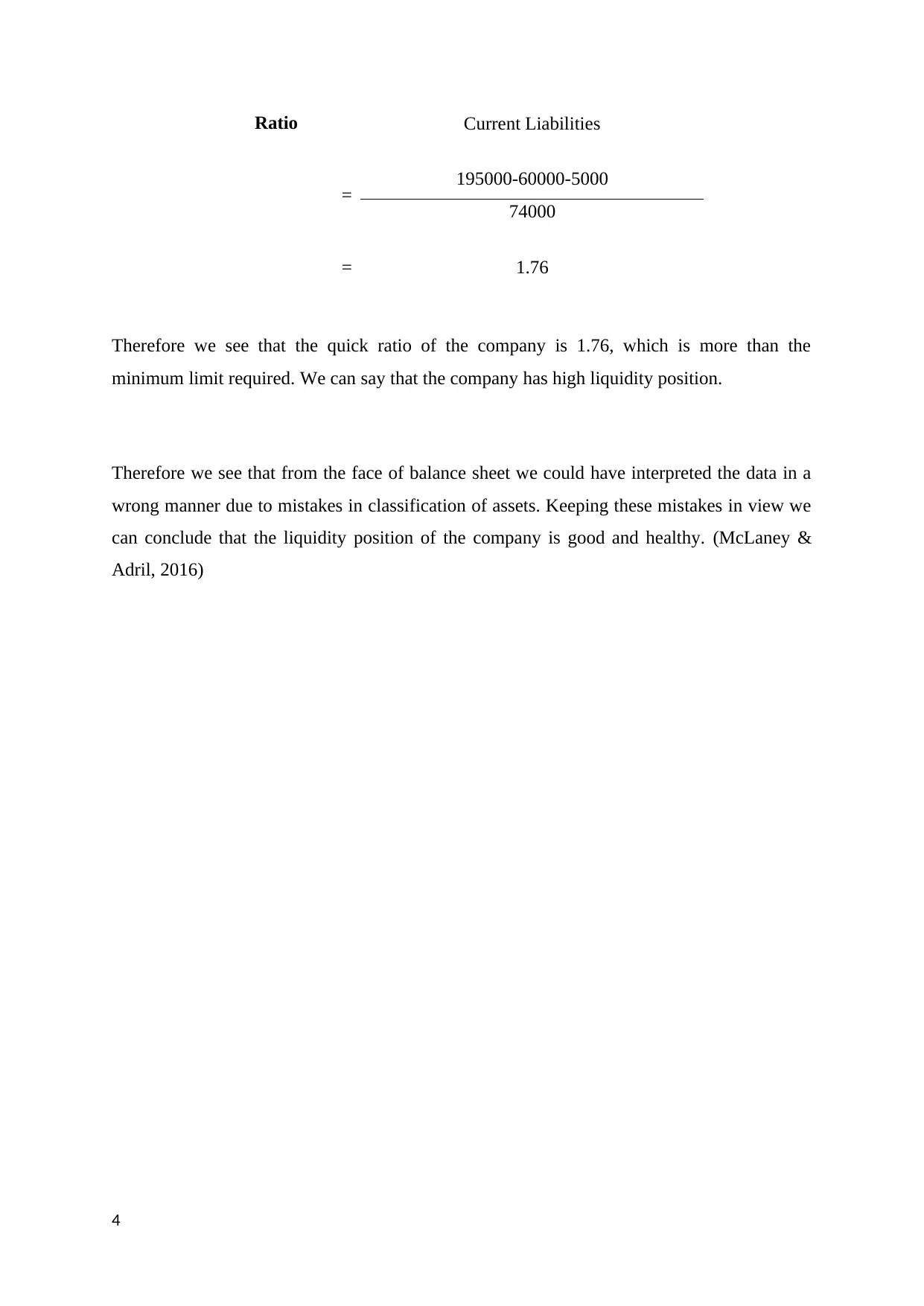
Ratio Current Liabilities
= 195000-60000-5000
74000
= 1.76
Therefore we see that the quick ratio of the company is 1.76, which is more than the
minimum limit required. We can say that the company has high liquidity position.
Therefore we see that from the face of balance sheet we could have interpreted the data in a
wrong manner due to mistakes in classification of assets. Keeping these mistakes in view we
can conclude that the liquidity position of the company is good and healthy. (McLaney &
Adril, 2016)
4
= 195000-60000-5000
74000
= 1.76
Therefore we see that the quick ratio of the company is 1.76, which is more than the
minimum limit required. We can say that the company has high liquidity position.
Therefore we see that from the face of balance sheet we could have interpreted the data in a
wrong manner due to mistakes in classification of assets. Keeping these mistakes in view we
can conclude that the liquidity position of the company is good and healthy. (McLaney &
Adril, 2016)
4
Paraphrase This Document
Need a fresh take? Get an instant paraphrase of this document with our AI Paraphraser
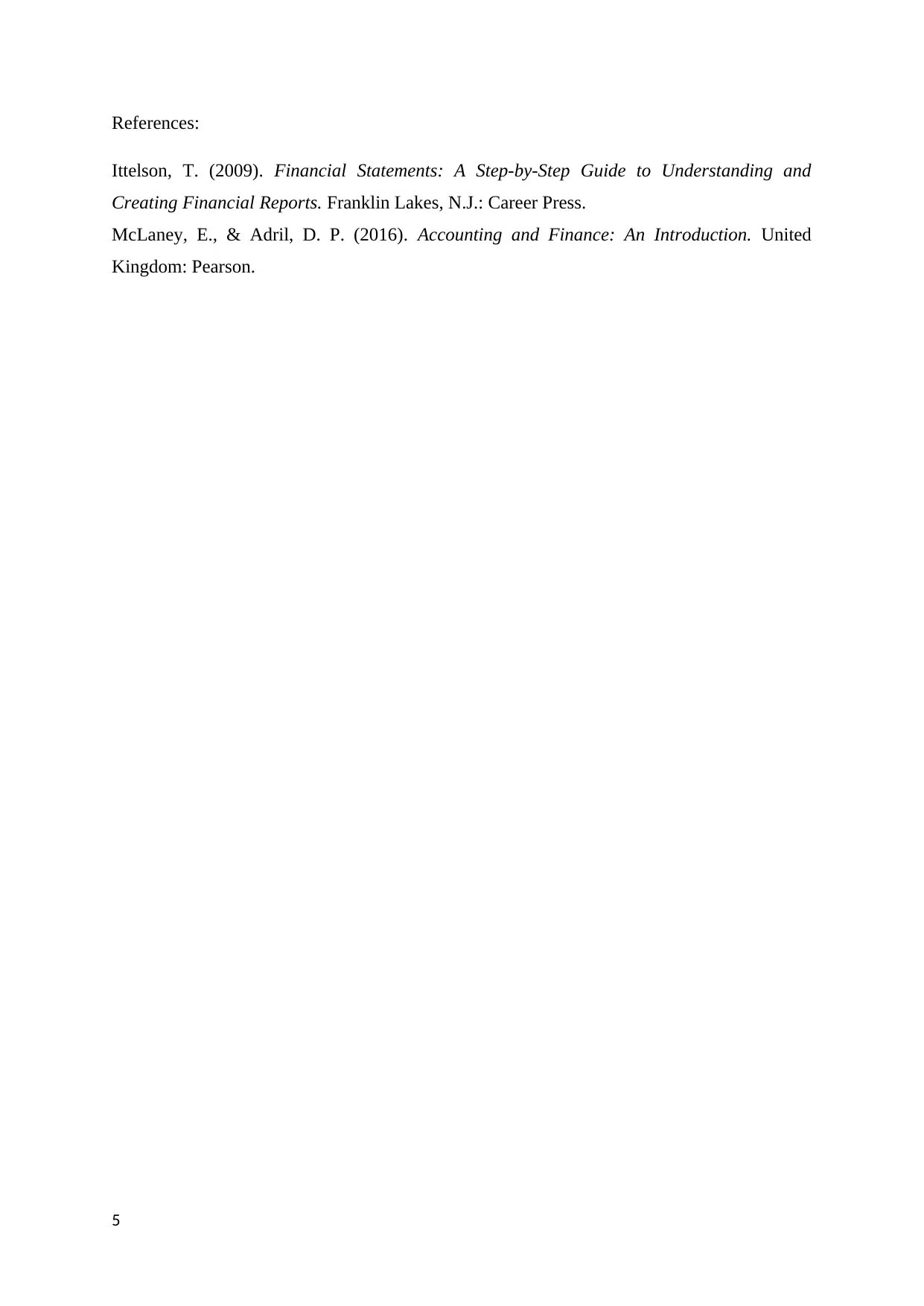
References:
Ittelson, T. (2009). Financial Statements: A Step-by-Step Guide to Understanding and
Creating Financial Reports. Franklin Lakes, N.J.: Career Press.
McLaney, E., & Adril, D. P. (2016). Accounting and Finance: An Introduction. United
Kingdom: Pearson.
5
Ittelson, T. (2009). Financial Statements: A Step-by-Step Guide to Understanding and
Creating Financial Reports. Franklin Lakes, N.J.: Career Press.
McLaney, E., & Adril, D. P. (2016). Accounting and Finance: An Introduction. United
Kingdom: Pearson.
5
1 out of 5
Related Documents
Your All-in-One AI-Powered Toolkit for Academic Success.
+13062052269
info@desklib.com
Available 24*7 on WhatsApp / Email
![[object Object]](/_next/static/media/star-bottom.7253800d.svg)
Unlock your academic potential
Copyright © 2020–2025 A2Z Services. All Rights Reserved. Developed and managed by ZUCOL.





